Principal Investigators
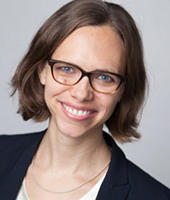 Prof. Dr. Karen Alim
Prof. Dr. Karen Alim
Department of Physics (TUM)
Email: k.alim@tum.de
Phone: +49 89 289 12192
Flow networks are a fundamental building block of life, whether as blood circulation, bronchioles in the lungs, nephron in the kidneys, intestines, lymphatic system or as the hydrothermal vents providing the conditions for the emergence of life. We want to decipher the physical principles that govern flow network architecture through the interaction between network architecture and the flows flowing through it. To this end we investigate flows, transport and reactions within and remodeling flow networks.
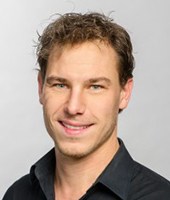 Prof. Dr. Job Boekhoven
Prof. Dr. Job Boekhoven
Department of Chemistry (TUM)
Email: job.boekhoven@tum.de
Phone: +49 89 289 10592
We look for life-like behavior in fully synthetic molecular assemblies. Inspired by biology, we couple the self-assembly of our building blocks to networks of irreversible chemical reactions. In the resulting far-from-equilibrium assemblies we search for robustness, adaptivity and self-replication, in an attempt to find life-like behavior using prebiotic chemistry.
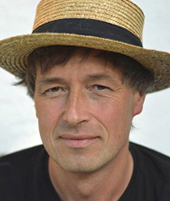 Prof. Dr. Dieter Braun
Prof. Dr. Dieter Braun
Systems Biophysics (LMU)
Email: dieter.braun@lmu.de
Phone: +49 89 2180 1484
Can we recreate molecular living systems in the lab? Which nonequilibrium settings can generate and trigger dead molecules to perform autonomous, Darwinian evolution? Temperature differences across open pores of rock are thermally cycling genetic molecules for replication while thermophoresis enhances polymerization and selects long over short genes. Despite studying the physics of thermophoresis, the movement of molecules in a thermal gradient, its application for biomolecule affinity detection has found widespread application through the Startup NanoTemper.
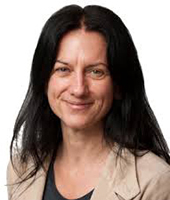 Prof. Dr. Paola Caselli
Prof. Dr. Paola Caselli
Center for Astrochemical Studies
Director - Max Planck Institute for Extraterrestrial Physics
Email: caselli@mpe.mpg.de
Phone: +49 89 30000 3400
Life has emerged on Earth and maybe in other planets/moons in our Solar System and beyond. We find organic molecules in comets and pre-biotic materials such as carbonaceous chondrites or interplanetary dust particles. When stars reach the end of their lives, heavy elements will be incorporated into future generations of stars and planets. Understanding this cycle is fundamental to understand how stars and planets form, how organic material evolves and how life could originate.
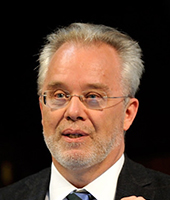 Prof. Dr. Don Dingwell
Prof. Dr. Don Dingwell
Department of Earth and Environmental Sciences
Section of Mineralogy, Petrology and Geochemistry (LMU)
Email: dingwell@lmu.de
Phone: +49 89 2180 4136
Experimental Volcanology is seeking an adequate understanding of the nature and extent of physico-chemical processes involved in explosive volcanism. In recent years much effort has focused on high silica (rhyolitic) melts under conditions relevant to explosive volcanism. Operating four experimental volcanoes, we study the origin, transport and extraction of magmas under different conditions of pressure, temperature and oxygen fugacity. Our experimental methods include the study of mineral synthesis and physicochemical characterisation of geomaterials under high pressure and high temperature conditions. Immediate applications include volcano monitoring, eruption forecasting, reconstructing the history of volcanic events through geologic time and understanding the role of explosive volcanism and volcanic ash in the earth system and its biosphere.
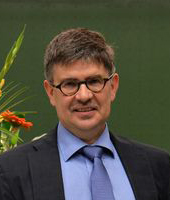 apl. Prof. Dr. Wolfgang Eisenreich
apl. Prof. Dr. Wolfgang Eisenreich
Biochemistry (TUM)
Email: wolfgang.eisenreich@mytum.de
Phone: +49 89 289 13336
We focus on the detailed quantitative analysis of metabolism networks and use incorporation experiments with stable isotope labeled precursors followed by GC-MS or NMR isotope analysis of key metabolites (carbohydrates, amino acids). Instead of analyzing metabolism using a linear and unidirectional view, the complexities of biological networks and their crosstalk with host cells, we assess the isotope distribution of multiple metabolites. The identification of metabolic key reactions can serve as novel targets for antibiotics.
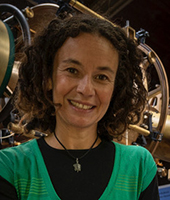 Prof. Dr. Barbara Ercolano
Prof. Dr. Barbara Ercolano
University Observatory (LMU)
Email: ercolano@usm.lmu.de
Phone: +49 89 2180 6974
We want to understand how planets are formed and how they evolve in their natal environment, which is the circumstellar disc surrounding newly-born stars. The star and planet formation process are intertwined and we aim at obtaining a holistic picture of this complex phenomenon. The atmospheric chemistry of a planet is dramatically influenced by the formation process within the disc and by the irradiation from the central star. We aim at developing and applying comprehensive numerical models to state-of-art-ground-based and space-borne observations to understand the star-disc-planet interaction that leads to the formation of habitable worlds.
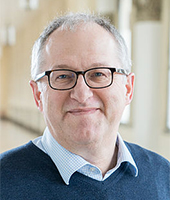 Prof. Dr. Erwin Frey
Prof. Dr. Erwin Frey
Statistical and Biological Physics (LMU)
Email: frey@lmu.de
Phone: +49 89 2180 4538
We focus on collective effects in the dynamics of complex systems. We are interested in how the interplay between stochastic fluctuations, geometries and interactions shape system-level properties and their functional characteristics. The aim is to develop a mechanistic understanding of system features. We use and develop analytical and numerical methods from non-equilibrium statistical physics and nonlinear dynamics.
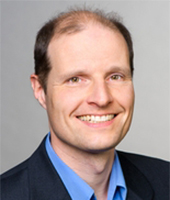 Prof. Dr. Ulrich Gerland
Prof. Dr. Ulrich Gerland
Head of Theory of Complex Biosystems (TUM)
Email: gerland@tum.de
Phone: +49 89 289 12380
We want to understand how the laws of physics constrain the implementation of biological function. In physics, interactions between particles follow laws. In biology, interactions between biomolecules serve a function. For instance, spatial arrangement and coordination of enzymes determine the efficiency of a multi-step reaction. Functional trade-offs emerge, which must be characterized to understand the optimization of such systems.
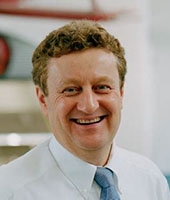 Prof. Dr. Wolfgang Heckl
Prof. Dr. Wolfgang Heckl
Oskar-von-Miller Chair of Scientific Communication(TUM)
Director General of the Deutsches Museum
Email: generaldirektor@deutsches-museum.de
Phone: +49 89 2179 313/314
The Deutsches Museum with its branch museums is an outstanding place for communicating scientific and technical knowledge and for a constructive dialogue between science and society. Together with the members of the CRC 235 we try to make the Emergence of Life scientific work more accessible to general public.
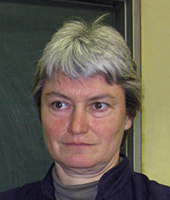 Dr. Claudia Huber
Dr. Claudia Huber
Lehrstuhl für Biochemie (TUM)
Email: claudia.huber@mytum.de
Phone: +49 89 289 13044
Analytical techniques (GC/MS, LC/MS, NMR) are used for various research topics. Focus is set on the origin of biomolecules on the early earth at volcanic hydrothermal settings. Reactions of various gases (eg. CO, COS, HCN, H2C2, H2S, H2, …) in aqueous solutions, on the surface of transition metal catalysts (eg. FeS, NiS, ….) under primordeal conditions (anaerobic, high temperature and pressure) are investigated. The resulting biomolecules (eg. hydroxy-, amino- and fatty acids) are considered to be basic constituents of a “metabolism first” origin of life on earth. Stable isotopes are used for product verification and mechanistical insights.
Prof. Dr. Andres Jäschke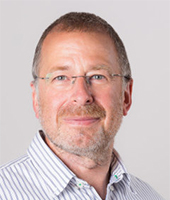
Bioorganic Chemistry (Uni Heidelberg)
Email: jaeschke@uni-hd.de
Phone: +49 6221 - 54 4851
Our laboratory explores unknown roles of RNA modifications, in particular RNA-linked coenzymes, in biology. Furthermore, we develop methods for imaging and microscopy of RNA in living cells, with a focus on super-resolution techniques. In another research area we develop, characterize and apply photoswitchable biomolecules. We also have a long-standing interest in the origin of life. Our work combines organic synthesis with molecular and cellular biology, biochemistry, bioinformatics and modern bioanalytical methods.
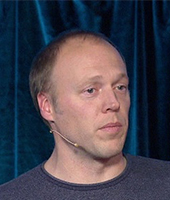 Prof. Dr. Tim Liedl
Prof. Dr. Tim Liedl
Soft Condensed Matter (LMU)
Email: tim.liedl@physik.lmu.de
Phone: +49 89 2180 3725
We focus on molecular self-assembly processes in general and particularly in the engineering of functional DNA devices using the DNA origami. The integration of self-assembled DNA into hybrid materials and its characterization will help us to understand the mechanical and chemical interactions across multiple levels of organization between the different molecular components in living cells and tissues.
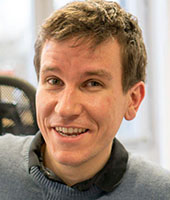 Dr. Christof Mast
Dr. Christof Mast
Systems Biophysics (LMU)
Email: christof.mast@physik.uni-muenchen.de
Phone: +49 89 2180 1484
We are interested in the role of non-equilibrium physical systems in processes relevant to the origin of life. Specifically, we are investigating how heat fluxes can separate and concentrate prebiotically relevant chemicals as well as the influence of UV radiation on sequence evolution in prebiotic polymer pools and combine these systems with realistic geological boundary conditions.
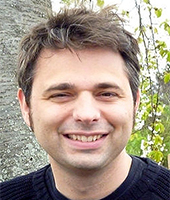 Prof. Dr. Hannes Mutschler
Prof. Dr. Hannes Mutschler
Biomimetic Systems (TU Dortmund)
Email: hannes.mutschler@tu-dortmund.de
Phone: +49 231 755 8696
We are interested in the bottom-up reconstitution of minimal genetic systems capable of recursive replication and Darwinian Evolution. Moreover, we are exploring different prebiotic environments for their ability to assist the emergence primitive RNA-enzymes during the Origin of Life. We employ a variety of methods from protein and nucleic acid biochemistry, genome assembly, directed evolution, and deep sequencing.
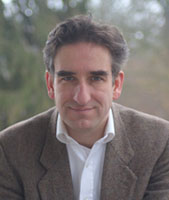 Prof. Dr. Christian Ochsenfeld
Prof. Dr. Christian Ochsenfeld
Department of Chemistry (LMU)
Chair of Theoretical Chemistry
Email: christian.ochsenfeld(at)cup.uni-muenchen.de
Phone: +49 89 2180 77920
Prof. Ochsenfeld's expertise is molecular dynamics, especially large scale quantum mechanical calculations solving the Schrödinger equations with efficient scaling on graphics card clusters. He has worked already on various biological systems, including DNA repair and is interested to learn about opportunities to apply his methods. His approach fundamentally differs both from force field and DFT calculations and he will be happy to describe and probe its advantages in future collaborations.
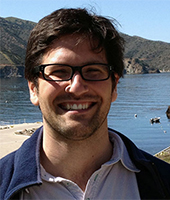 Prof. Dr. William Orsi
Prof. Dr. William Orsi
Department of Earth and Environmental Sciences (LMU)
Palaeontology & Geobiology
Email: w.orsi@lrz.uni-muenchen.de
Phone: +49 89 2180 6598
We are focused on the biological and biochemical mechanisms underlying microbial loops: the biogeochemical cycling of carbon and its processing through microbial food webs. At deep sea low temperature hydrothermal vents chemolithoautotrophic microbes are able to fix CO2 in the absence of sunlight, fueled by geological energy sources. These settings exhibit water-rock interactions and abiotic chemistry called serpentinization, whereby the abiotic synthesis of organic molecules occurs in a naturally exiting proton gradient. This is hypothesized to be analogous to the metabolism of the first cell and the chemolithoautotrophic microbes living at these settings today obtain energy through a similar carbon fixation and bioenergetic pathway. We are interested in the genomic evolution of this ancient bioenergetic pathway throughout the geological record, its role in the origins of life, and the mechanisms by which it supports life and ecosystems.
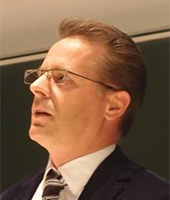 Prof. Dr. Clemens Richert
Prof. Dr. Clemens Richert
Institute of Organic Chemistry (Uni Stuttgart)
Email: lehrstuhl-2@oc.uni-stuttgart.de
Phone: +49 711 685 64311
The Richert Research Group studies potentially prebiotic processes from the point of view of organic chemistry. This includes reactions involving nucleotides, amino acids and cofactors in aqueous solution containing a condensing agent and buffer salts. Product analysis is performed using spectroscopic, spectrometric and chromatographic techniques to shed light on the reactivity of fundamental biomolecules that are found in all kingdoms of life.
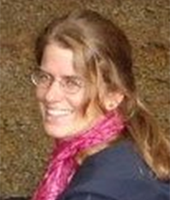 Prof. Dr. Bettina Scheu
Prof. Dr. Bettina Scheu
Department for Earth and Environmental Sciences
Section for Mineralogy, Petrology und Geochemistry
Email: b.scheu@lmu.de
Phone: +49 89 3187 3246
Volcanoes are the most spectacular expression of geologic dynamism on Earth as well as on other planets. Geological evidences show that volcanoes on Earth have been active before the appearance of life above and below the oceans, thus contributing to the conditions for which life has originated and subsequently proliferated. We experimentally investigate the conditions of generation and dispersion of solid aerosols, their electrification and their reactivity with volcanic and other gases as well as the high temperature and pressure conditions of hydrothermal vents that might have contributed to the origin of life on our planet.
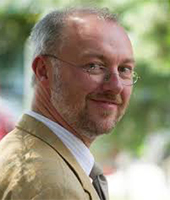 Prof. Dr. Philippe Schmitt-Kopplin
Prof. Dr. Philippe Schmitt-Kopplin
HelmholtzZentrum München
Research Unit Analytical BioGeoChemistry
Email: schmitt-kopplin@helmholtz-muenchen.de
Phone: +49 89 2180 4259
We describe the small molecule chemistry of Life (Metabolomics), Life-decay (organic geochemistry) and “pre-Life” (prebiotic and meteoritic chemistry) using an analytical combination of high resolving power. We profile the compositional space of these organic environments with ultrahigh resolution mass spectrometry (ICR-FT-MS) and the functional space with high field nuclear magnetic resonance spectroscopy (NMR). Our output is a process understanding on a molecular level and/or the description of molecular markers of biological, geochemical or astrochemical relevance.
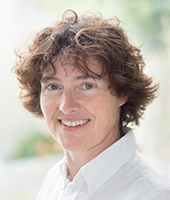 Prof. Dr. Petra Schwille
Prof. Dr. Petra Schwille
Cellular and Molecular Biophysics
Director - Max Planck Institute of Biochemistry
Email: office-schwille@biochem.mpg.de
Phone: +49 89 8578 2900
Our ambition is to quantitatively understand living systems on the scale of individually active and interactive molecules such as proteins, lipids and nucleic acids. To unravel the underlying basic principles of biological phenomena, we follow a bottom-up approach of minimal systems in the framework of synthetic biology. The very far goal of such approaches could be the in vitro reconstitution of a self-replicating biomimetic system.
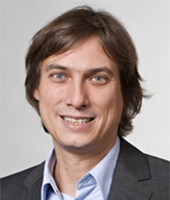 Prof. Dr. Friedrich Simmel
Prof. Dr. Friedrich Simmel
Synthetic Biological Systems (TUM)
Email: simmel@tum.de
Phone: +49 89 289 - 11611
The Simmel Group explores the pysicochemical properties of natural and artificial biomolecular systems and their applications in bionanotechnology and synthetic biology. The goal is the realization of self-organizing molecular and cellular systems that are able to respond to their environment, compute, move, take action. On the long term, we envision autonomous systems that are reconfigurable, that can evolve and develop.
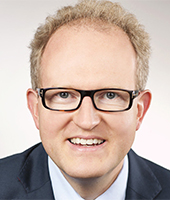 Prof. Dr. Oliver Trapp
Prof. Dr. Oliver Trapp
Department of Chemistry (LMU)
Email: oliver.trapp@cup.uni-muenchen.de
Phone: +49 89 2180 77461
Are there universal principles which have led to the origin of life on Earth and how can we identify them? We are addressing fundamental questions about the formation of chemical networks that can form living systems. Major focus is the understanding of mechanisms that led to the homochirality of organic compounds, e.g. amino acids and sugars.
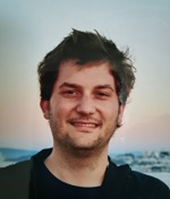 Prof. Dr. Daniel Weidendorfer
Prof. Dr. Daniel Weidendorfer
Department for Earth and Environmental Sciences
Section for Mineralogy, Petrology und Geochemistry
Email: d.weidendorfer@lmu.de
Phone: +49 89 2180 4274
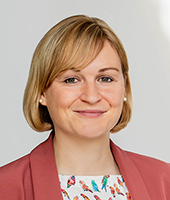 Prof. Dr. Cathleen Zeymer
Prof. Dr. Cathleen Zeymer
Department of Chemistry (TUM)
Email: cathleen.zeymer@tum.de
Phone: +49 89 289 13343
The Zeymer group focuses on the design and laboratory evolution of artificial metalloenzymes and photoenzymes. We engineer novel biocatalysts and want to understand their structure and molecular mechanism. In CRC 235, we aim to explore the potential and plausibility of simple metallopeptides as prebiotic catalysts. We will study these minimalist versions of modern enzymes in the context of reaction cycles that drive the formation of molecular assemblies.

